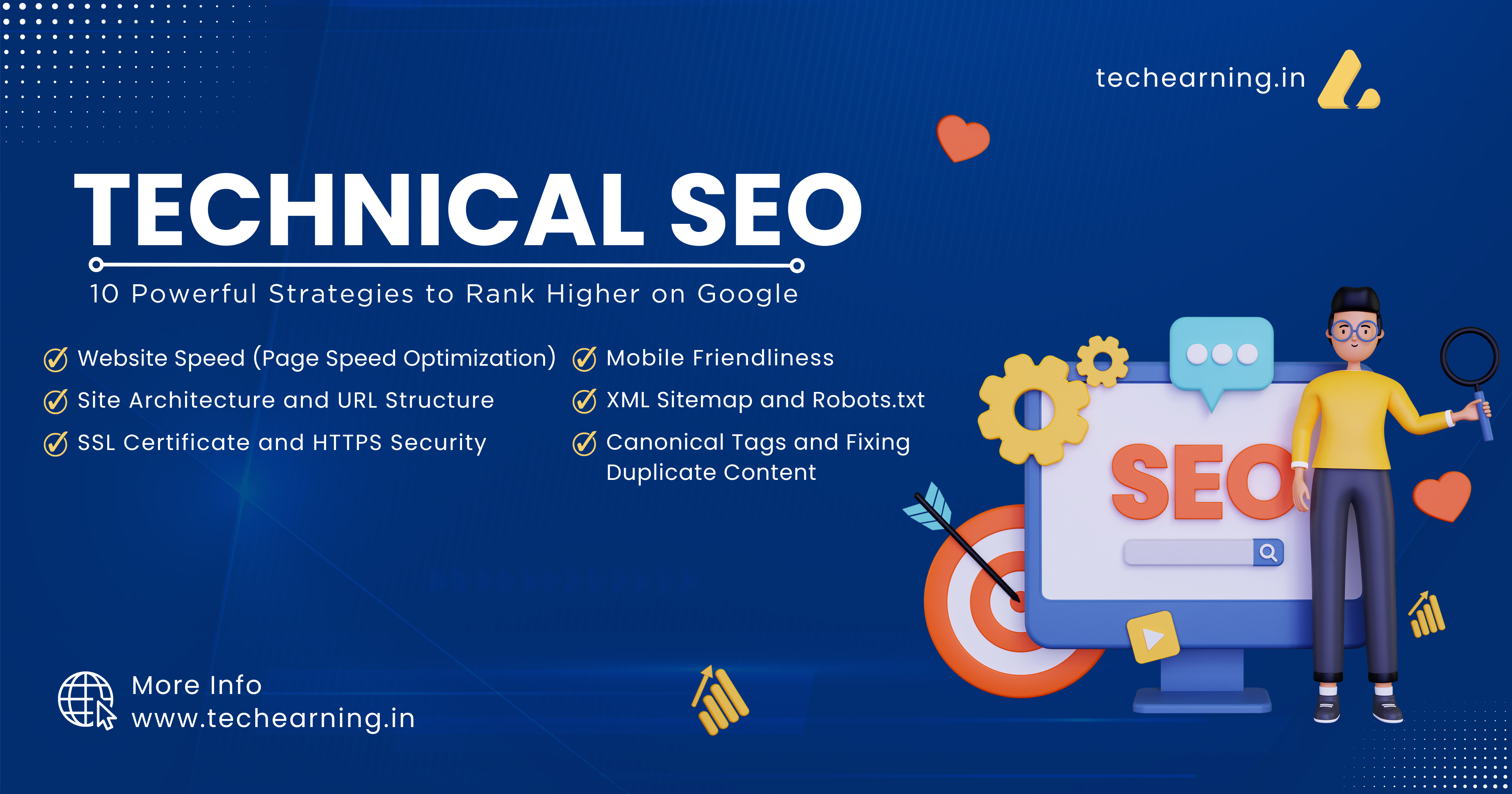
Technical SEO: The Ultimate Way to Boost Your Website Ranking (10 Proven Strategies)
What is Technical SEO and Why is it Important?
Technical SEO focuses on optimizing the backend of your website so that search engines can easily crawl and index it. Even if your content is great, your site won’t rank well if it has technical flaws.
It plays a crucial role in website speed, mobile-friendliness, site architecture, and security, ensuring a seamless user experience and better ranking in search results. Without proper Technical SEO, even high-quality content may remain unnoticed by search engines.
A well-structured technical foundation helps search engines understand your website better, leading to higher visibility, improved indexing, and better performance in search rankings.
Technical SEO is a core component of search engine optimization (SEO), ensuring that your website meets the necessary technical requirements for higher search engine rankings.
Key Elements of Technical SEO
Website Speed (Page Speed Optimization)
According to Google’s Core Web Vitals update, site speed is a major ranking factor. A slow website can increase bounce rates and negatively impact user experience. To improve website speed:
- Use WebP format for images to reduce file size.
- Minify CSS and JavaScript to decrease load times.
- Choose fast and reliable web hosting.
- Implement browser caching and a Content Delivery Network (CDN).
- Optimize server response time and database queries.
Mobile Friendliness
Over 70% of users access the internet via mobile. Google prioritizes mobile-first indexing, meaning your website’s mobile version is considered first for ranking. To optimize for mobile:
- Implement a responsive design that adjusts to all screen sizes.
- Reduce page load time by optimizing images and scripts.
- Ensure clickable elements like buttons are correctly spaced.
- Improve mobile navigation with a user-friendly menu.
Site Architecture and URL Structure
A well-structured website and clean URLs enhance SEO. Follow these best practices:
- Use breadcrumbs for better navigation and indexing.
- Keep URLs short, meaningful, and keyword-rich.
- Implement proper internal linking to guide users and search engines.
- Organize your content into logical categories and subcategories.
- Avoid deep URL structures that make content harder to find.
SSL Certificate and HTTPS Security
Google gives priority to secure websites. If your website is still on HTTP, it may be marked as “Not Secure.” To ensure website security:
- Install an SSL certificate to encrypt data.
- Migrate your website from HTTP to HTTPS.
- Regularly check for mixed content issues that may affect security.
- Use secure authentication methods to prevent cyber threats.
XML Sitemap and Robots.txt
- XML Sitemap helps search engines index your pages efficiently. It serves as a roadmap for search engine crawlers.
- Robots.txt guides search engines on which pages to crawl and which to ignore, preventing unnecessary indexing of certain pages.
- Regularly update and submit your XML sitemap to Google Search Console.
Canonical Tags and Fixing Duplicate Content
Duplicate content can confuse search engines and dilute ranking power. Use Canonical Tags to tell search engines which page is the original and should be indexed. This prevents unintentional duplicate content penalties.
- Ensure proper use of canonical tags on similar pages.
- Avoid duplicate meta descriptions and title tags.
Common Technical SEO Mistakes and Their Solutions
Slow Website Loading Speed
Solution: Upgrade web hosting, use caching plugins, and minimize CSS/JS files. Optimize images and enable lazy loading for better performance.
Broken Links
Solution: Regularly check for broken links using a link checker tool and fix them to avoid poor user experience and crawl issues.
Incorrect Redirects
Solution: Implement 301 redirects correctly for permanent URL changes and avoid unnecessary 302 redirects that might confuse search engines.
Noindex Meta Tag Errors
Solution: Ensure critical pages do not have the noindex tag, which can prevent them from ranking in search engines. Always verify settings in robots.txt and meta tags.
Poor Internal Linking
Solution: Improve internal linking to connect relevant pages and distribute link equity effectively.
10 Proven Strategies to Improve Technical SEO (2025 Edition)
- Keep website loading time under 2 seconds.
- Make your website mobile-friendly.
- Use breadcrumbs for better navigation.
- Implement Schema Markup for rich snippets.
- Optimize and configure Robots.txt properly.
- Keep your XML Sitemap updated.
- Submit your site to Google Search Console.
- Migrate from HTTP to HTTPS.
- Use 301 redirects appropriately.
- Perform regular SEO audits to fix technical issues.
Conclusion
Technical SEO is an essential part of digital marketing. Implementing the right Technical SEO strategies can significantly improve your website’s ranking, user experience, and search engine visibility. A well-optimized website ensures better crawling and indexing by search engines, leading to increased organic traffic.
By focusing on website speed, mobile-friendliness, structured data, and security, you can build a strong technical foundation for long-term SEO success. Regular audits and updates are key to maintaining optimal performance.
If you need any help with Technical SEO or Digital Marketing, visit our Home Page to explore our services!
